Customer loyalty is an absolutely essential part of every business as it can boost company profits and drive sustainable growth. But how happy are your customers with your products and services? And, perhaps more importantly, how loyal are they?
The best way to measure brand perception and loyalty is with the Net Promoter Score (NPS).
Contents
- What is the Net Promoter Score Formula?
- NPS Calculation + Examples
- What Does NPS Mean?
- NPS Survey Types
- How to Improve Your Net Promoter Score
- Infographic
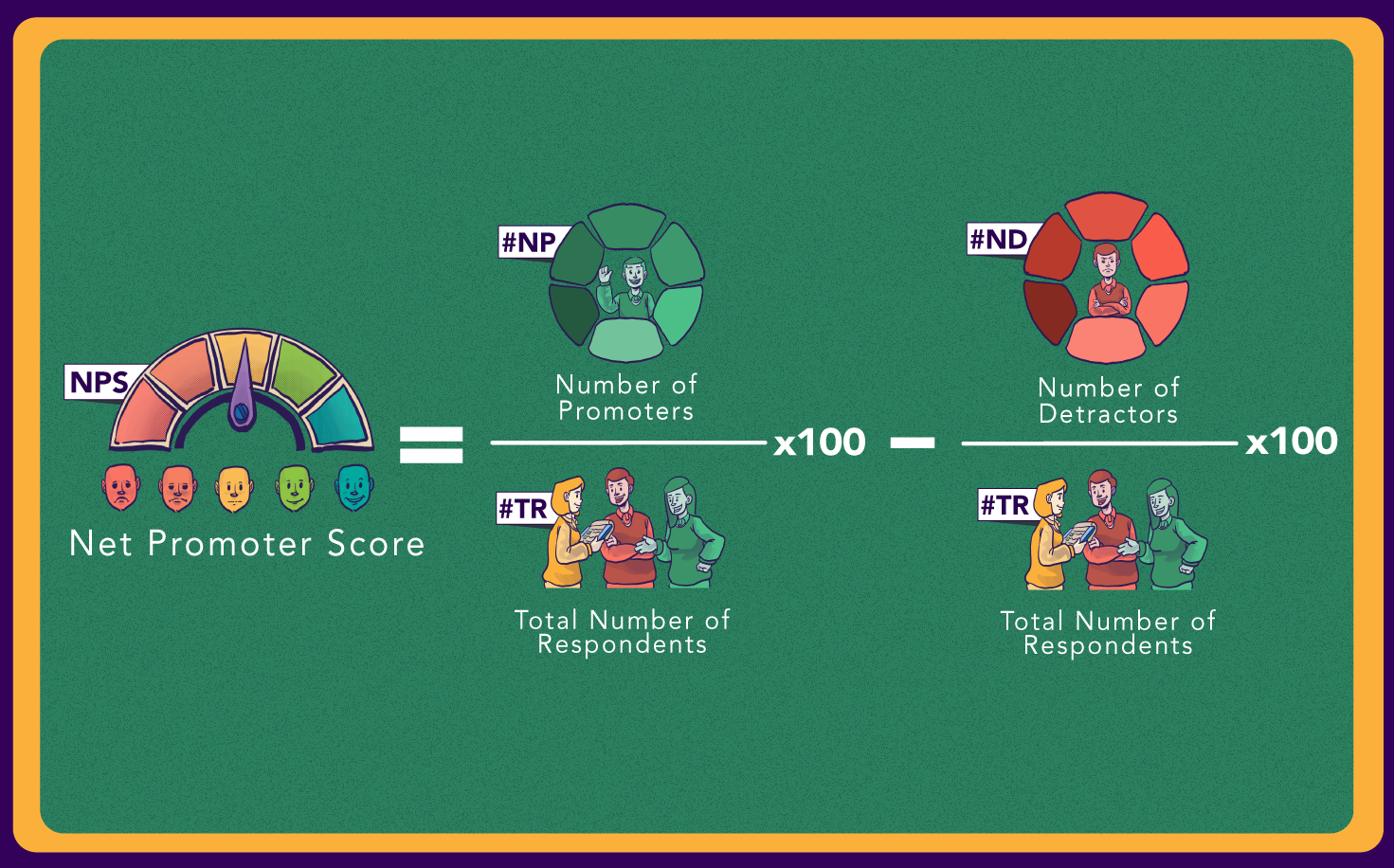
What Is the Net Promoter Score Formula?
The NPS may seem simple on the surface, but it’s actually a complex metric that helps companies understand brand perception, organizational performance, customer experience, growth potential, and customer satisfaction.
To calculate your company’s NPS, the formula is as follows:
Net Promoter Score = (Number of Promoters/Total Number of Respondents) x100 – (Number of Detractors/Total Number of Respondents) x 100
Of course, the formula will only make sense if you truly understand what the different labels mean and how they are assigned. Let’s have a look at them.
- Promoters: They are a company’s most enthusiastic supporters. They help drive company growth, boost brands’ reputation, and often act like brand ambassadors. They give scores of 9 and 10 on the NPS survey.
- Passives: Close to being promoters, they’re neither for or against the company and are generally satisfied but not too enthusiastic about the company. They generally give scores of 7 or 8.
- Detractors: They’re usually unhappy and don’t like the company much. They don’t recommend the company’s products and they may actually discourage people from buying. They give scores from 0 to 6.
When used and analyzed correctly, the NPS can help companies build strong relationships with their customers and increase customer retention, which can be very profitable, especially since just a 5% increase in retention can lead to a rise in profit of more than 25%.
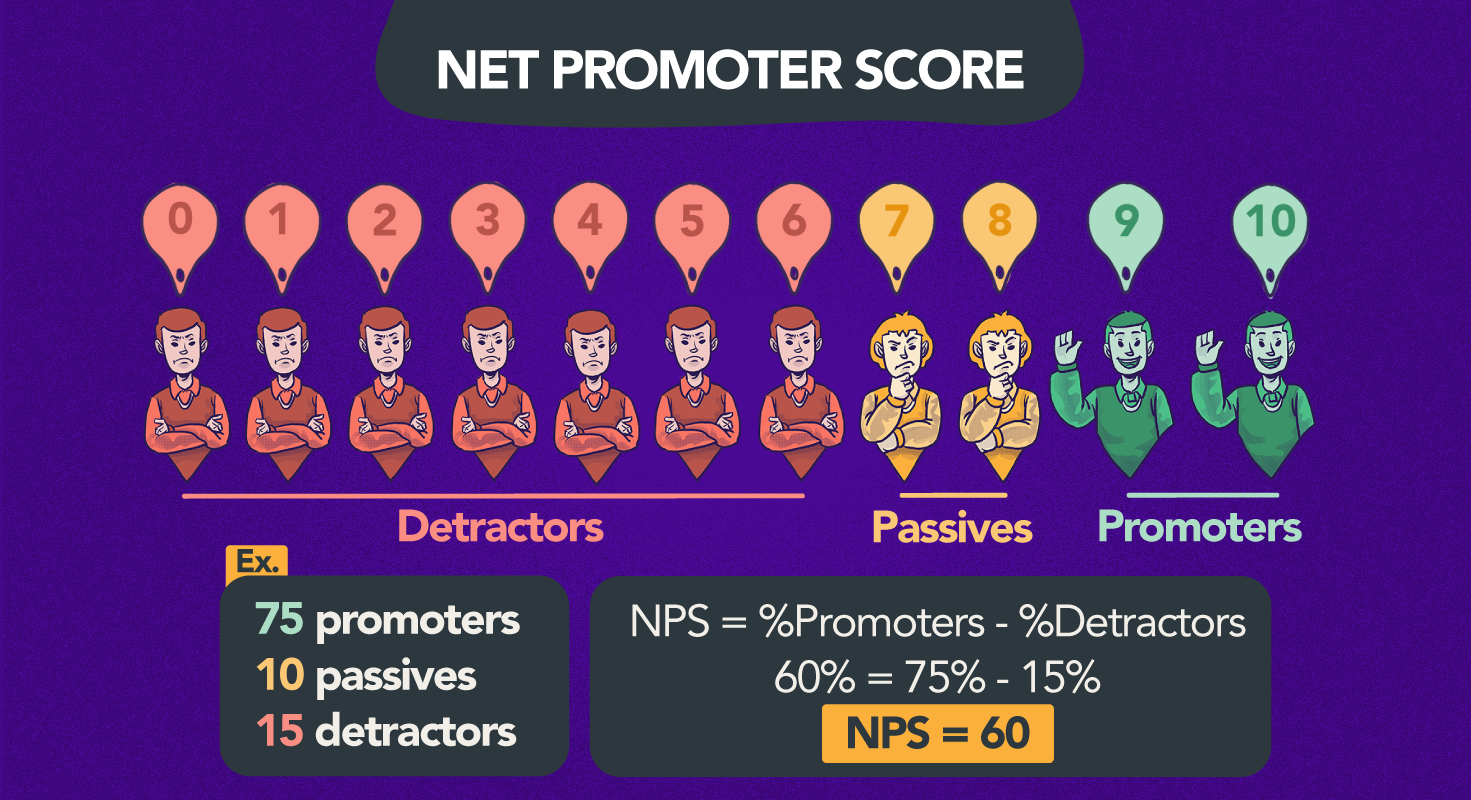
NPS Calculation + Examples
Let’s apply the formula using some fictitious numbers.
Company A surveyed 100 customers, which yielded the following results:
- 75 promoters
- 10 passives
- 15 detractors
Now when we apply the NPS formula, we get:
%Promoters – %Detractors = NPS
75% – 15% = 60%
Thus, NPS would be 60.
But how did we get here? Let’s back up a little.
1. Survey Your Customers
The first thing you need to do is to survey your customers. That could mean sending them an email after interacting with you, or it could be through a poll on social media or via a pop-up notification.
The question you want to ask is:
How likely are you to recommend COMPANY X to a friend or colleague?
The question should be followed by a scale of 0 to 10, and the respondents can pick the number of their choice—0 being unlikely to 10 being most likely. Moreover, you should also include an open-ended question in the survey for the customers to share more about why they chose a particular score.
This information won’t affect the overall NPS. Still, it will give you invaluable insight into how that person feels about your brand and how you can improve a specific area of your business.
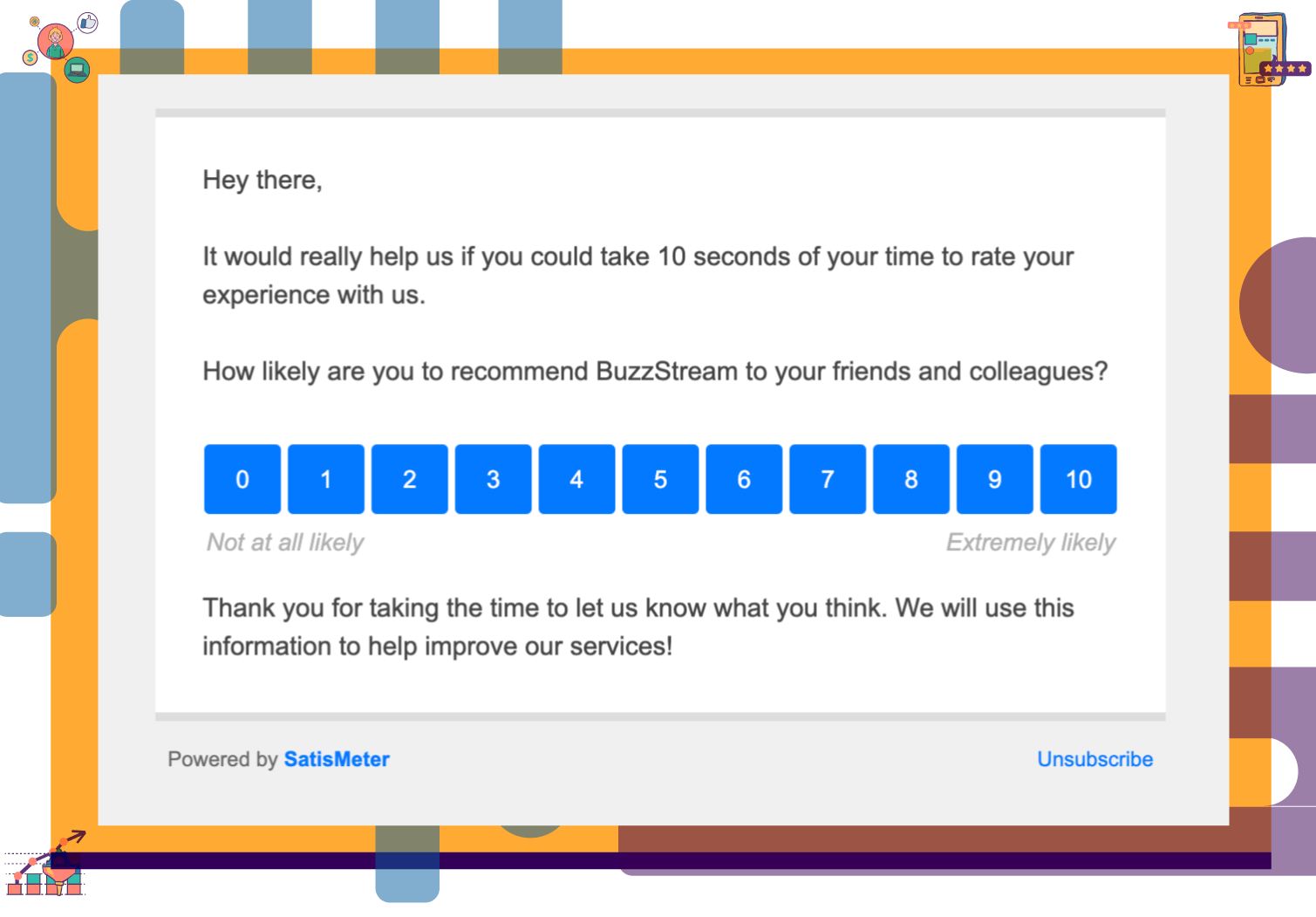
2. Categorize Their Responses
The next step is to count up all of the answers and organize them into their corresponding categories.
- Promoters: People who responded with a score of 9 or 10.
- Passives: People who responded with a score of 7 or 8.
- Detractors: People who responded with a score of 0 to 6.
Promoters, who are your biggest fans, can be broken down further into four categories.
- Admirers: They give quantitative but not qualitative feedback.
- Loyalists: Offer both negative and positive feedback to help you improve your offer.
- Fans: They spread the word and bring you referrals.
- Followers: They stick around through thick and thin and are your true promoters.
Passives are on the fence; they’re not entirely happy with your product or service and may be thinking about switching over to the competition. These people are somewhat satisfied with what you have to offer, but they are not extremely loyal.
It’s worth noting that, although passives are not included in the formula, their opinions are essential, especially those people who rate you an 8, because they’re on the verge of being classified as promoters.
If you can identify what’s keeping them on the fence and make said improvements, you can easily convert them into promoters.
Detractors are bad news for a business as they are dissatisfied, have a higher chance of churning, and may even talk potential customers out of doing business with you.
Detractors can be a dangerous bunch considering that dissatisfied people usually tell between 9 and 15—and sometimes up to 20—people about their bad experience, so one of your primary goals should be to ensure that you have as few detractors as possible.
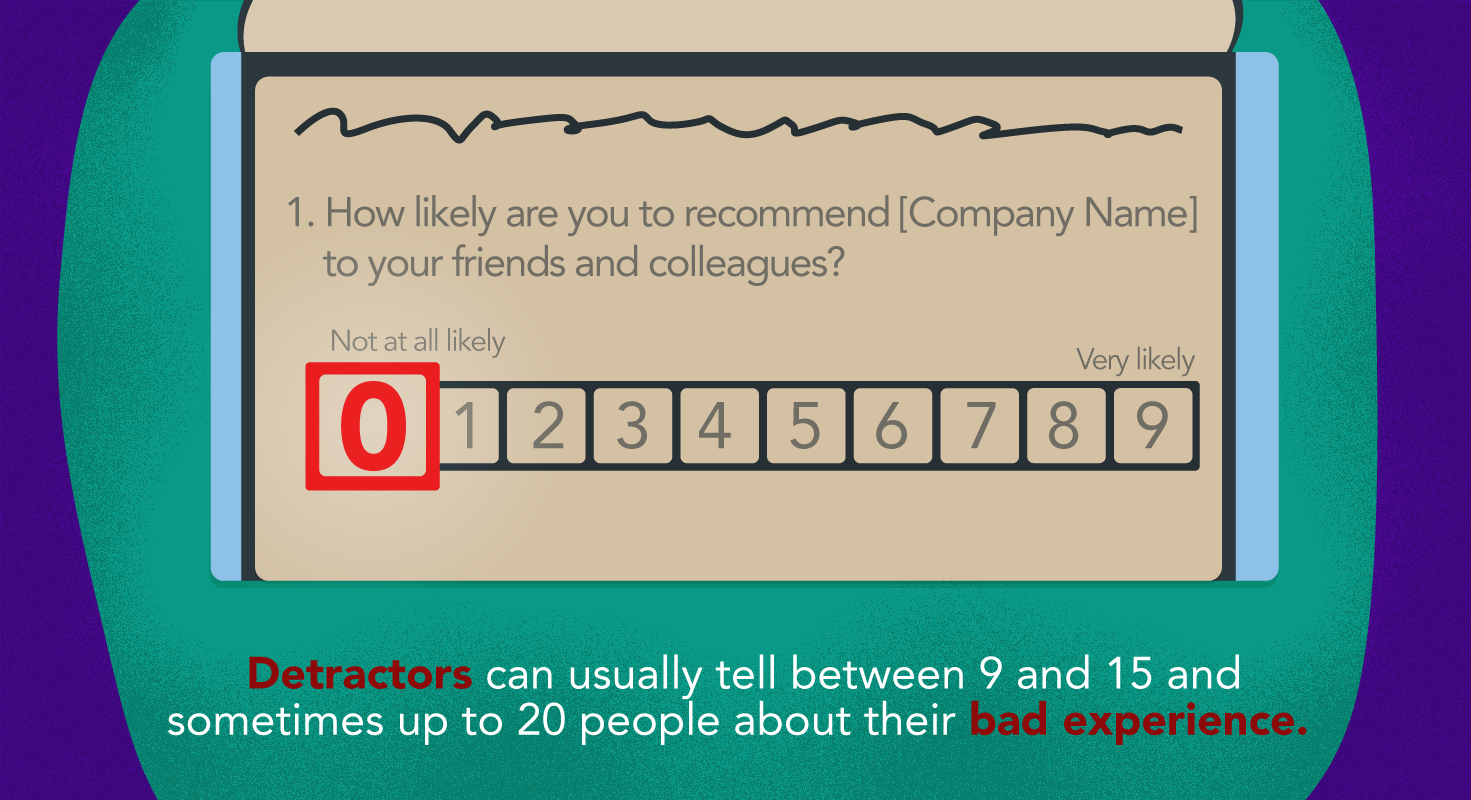
3. Find The Percentage of Promoters and Detractors
Now you’re going to want to determine the percentage of promoters and detractors.
Start by counting the number of people who gave you a 9 and 10 and then divide that number by the total number of respondents. If we use the example above, recall that from a total of 100 respondents, 75 rated your company a 9 or 10, so 75/100 is 75%.
Do the same with your detractors, i.e., the people that gave you a score of 0 through 6. In our example, 15 people gave you a poor score, so 15/100 is 15%. So 75% are promoters, and 15% are detractors.
4. Calculate The Score
Now, all you have to do to calculate your final NPS is to subtract the detractors from the promoters:
75% – 15% = 60%
The final score is expressed as a number and not a percentage, so, in this example, your company’s NPS would be 60.

What Does NPS Mean?
Data is meaningless if a company doesn’t do anything with it or know how to interpret it. The NPS provides businesses with insight into several critical questions, such as:
- Are your customers thrilled with your product or service?
- How are your customers’ opinions shifting over time?
- What changes need to be made to keep your customers satisfied?
Let’s take a closer look at what NPS really means for your business and how it should be interpreted.
Are Your Customers Happy?
You know by now that the NPS is essentially a reflection of customer satisfaction; the higher it is, the greater the number of happy customers compared with unhappy ones. If it’s high, businesses know they’re doing something right that they need to keep doing, and they should figure out how to capitalize on that high score.
In contrast, for companies with a low NPS, determining their score can be a great wake-up call that they need to understand why it’s low and start to do things differently.
How Are Customers’ Opinions Shifting Over Time?
The NPS will also give you insight into your customers’ opinions and how they change over time. If your score is rising, you’re clearly keeping people happy. However, if you see your score dip, or if you see an increase in passives, there’s a problem somewhere that needs to be addressed as soon as possible.
If you include a space in your survey for people to share the reasons for their ratings, the answer could lie here. There will probably be a wide range of feedback, so keep an eye out for repeated comments or concerns and start there. Working to correct something that affects many customers can significantly impact their satisfaction and, ultimately, your score.
What Changes Need to be Made?
Answering this question will take time. Companies will have to sort through all the feedback, look for patterns, and identify how they can improve customer service, customer perception, the customer experience, current products, and company policies.
Putting these positive changes in place will ideally not only turn more people into promoters but, equally importantly, maintain current promoters. Retention is critical for many reasons, including the fact that loyal customers spend 67% more than new ones.
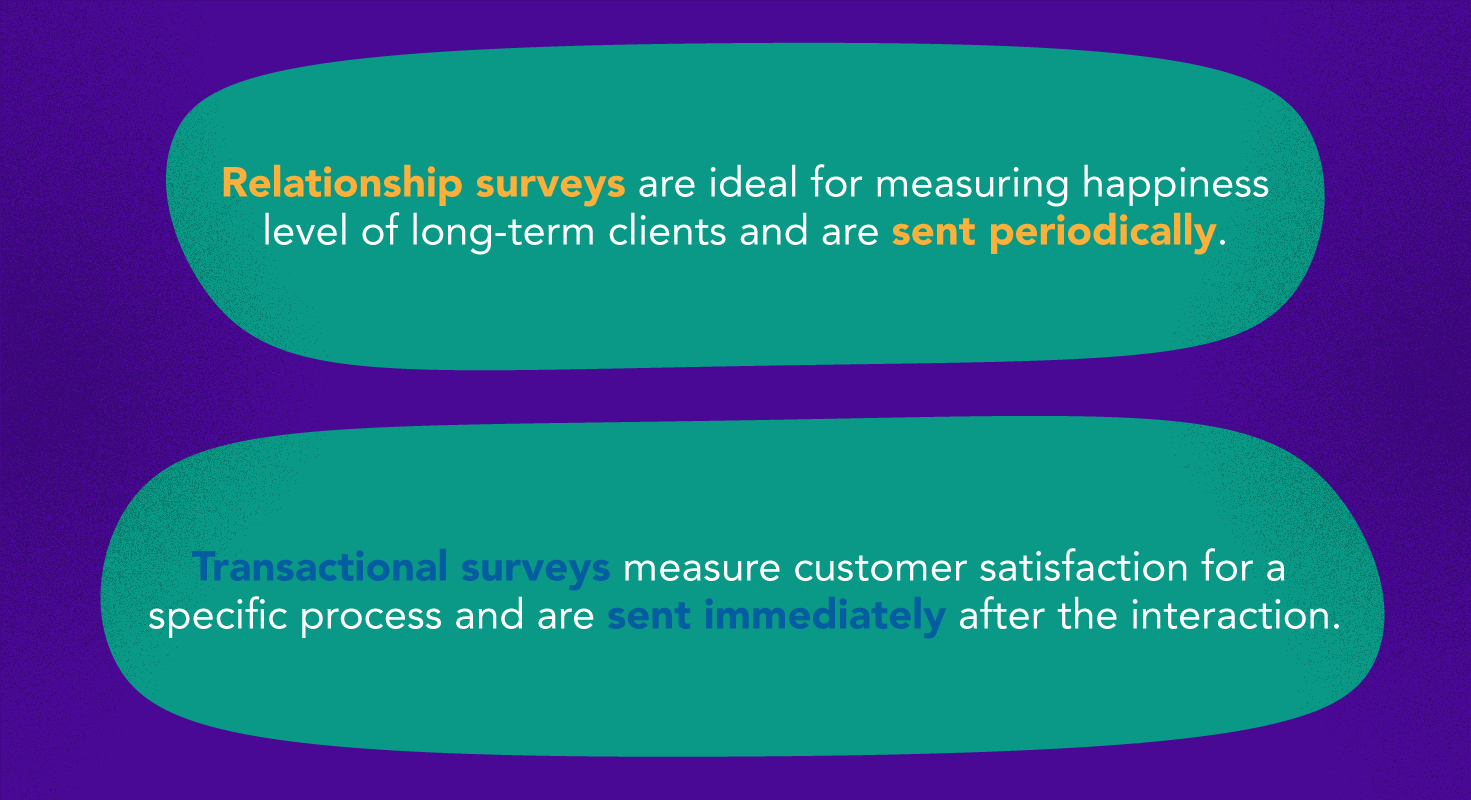
NPS Survey Types
There are two types of NPS surveys, relationship and transactional, and both are complementary and equally important. The overall goal for deploying them is to measure loyalty and, ultimately, to convert detractors into promoters. However, businesses should be careful; too many surveys or questions may bother customers and have a negative impact.
The type of survey you use will depend on your company’s goals. Let’s take a closer look at how these differ, so you can determine if one or both could be helpful to your business.
Relationship
These surveys are offered to customers on a regular basis, such as quarterly, half-yearly, or annually. They help businesses with the following:
- Understand overall customer experiences and satisfaction.
- Determine the likelihood that customers will put in a good word for you with their colleagues and friends.
- Catch their customers before they switch to the competition.
- Assess the company’s overall health when it comes to repeat purchases and customer retention.
As a result, these surveys are ideal for sending to long-term clients to ensure that they’re happy.
Transactional
Transactional surveys are different in that they offer immediate insight and seek to measure a customer’s satisfaction concerning a specific interaction, process, or touchpoint.
These surveys do not seek to measure overall loyalty but, instead, a current customer’s opinion in connection with an experience or transaction such as placing an order, speaking with customer service, or receiving an invoice.
Timing is crucial, so reaching out immediately after an interaction is essential.
Below are a couple of examples of transactional NPS surveys:
Based on your billing experience, how likely are you to recommend us to a colleague or client on a scale of 0 to 10?
How likely are you to recommend our coffeemaker to friends and colleagues?
As you can see, these survey questions are highly specific and seek feedback about a particular event or interaction.
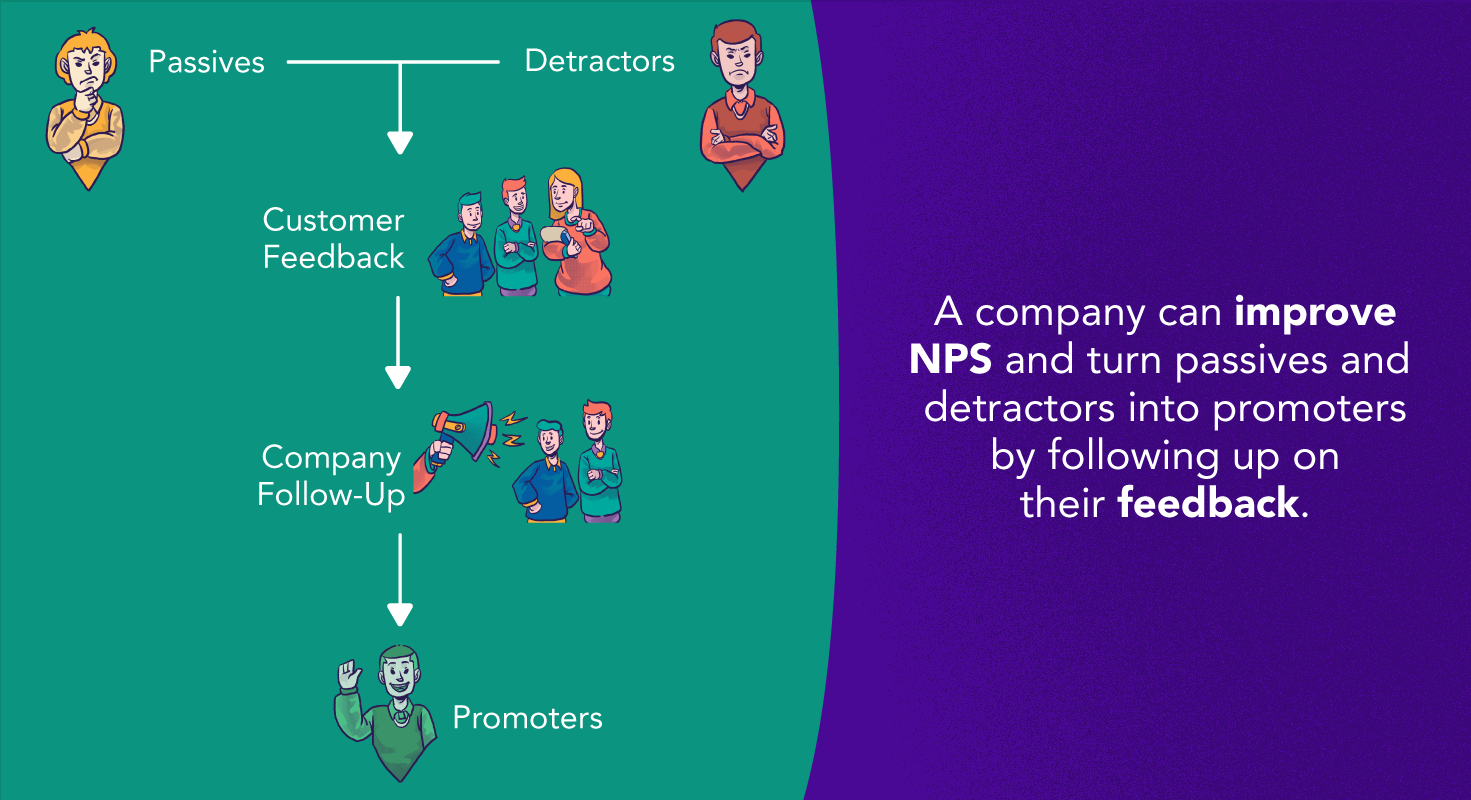
How to Improve Your Net Promoter Score
So you’ve calculated your NPS, and you see scope for improvement. What can you do to boost it?
Keep reading for seven easy-to-implement ideas businesses can get started with today.
Establish NPS Objectives for Every Department
Everybody needs to be on board for an improvement strategy to work, so it must be adopted from top to bottom. After all, the customer experience involves just about every department, from product quality to customer service. Each department should have a target NPS they need to achieve, and the departments must work internally and collaboratively to bring everyone in line. Also, the objectives should be SMART: specific, measurable, attainable, realistic, and timely.
Convert Detractors and Passives into Promoters
Detractors are a vital part of the equation. They share brutally honest reviews and opinions about your business, and they’re the ones to identify the loopholes and shortcomings, which allows you to fix them.
The best way to remedy the situation is to engage with them. Once they give you a bad score, reach out and ensure they know that their opinion is important to you and you’re listening to them. After following up with them, bring the issue to your teams to attempt to solve it. They can also get in touch with the customer to let them know that you’re working on, or you’ve solved, their problem.
When it comes to passives, it’s best to follow a two-pronged strategy. For those who didn’t leave an explanation with their rating, reach out to them and ask for more information. For those who did, pretend they’re detractors and treat them as we detailed above.
It’s also worth mentioning non-respondents here. This critical yet often ignored segment is likely to churn. If you have any highly valuable customers in that group, get on the phone with them for a one-on-one call and find out how you can help them.
Take Care of Your Employees
Employees perform the best when they’re engaged. That’s when they’re more productive, driven, provide superior customer service, work harder and stay for longer in their jobs. In short, when your staff is emotionally invested in their work, they perform better. Making sure that employees feel valued can directly impact every aspect of the business, including the NPS.
Get to the Root Cause
When you’re analyzing feedback from promoters, passives, and detractors, you may notice that some departments consistently receive stellar scores while others typically receive negative feedback.
You’ll want to conduct a root cause analysis to help you determine where the problem lies; is it the department itself, the product line, or entirely something else? Once you can pinpoint what is driving the dissatisfaction, you can address and remedy it better and make the corresponding structural changes that will ideally lead to an improvement.
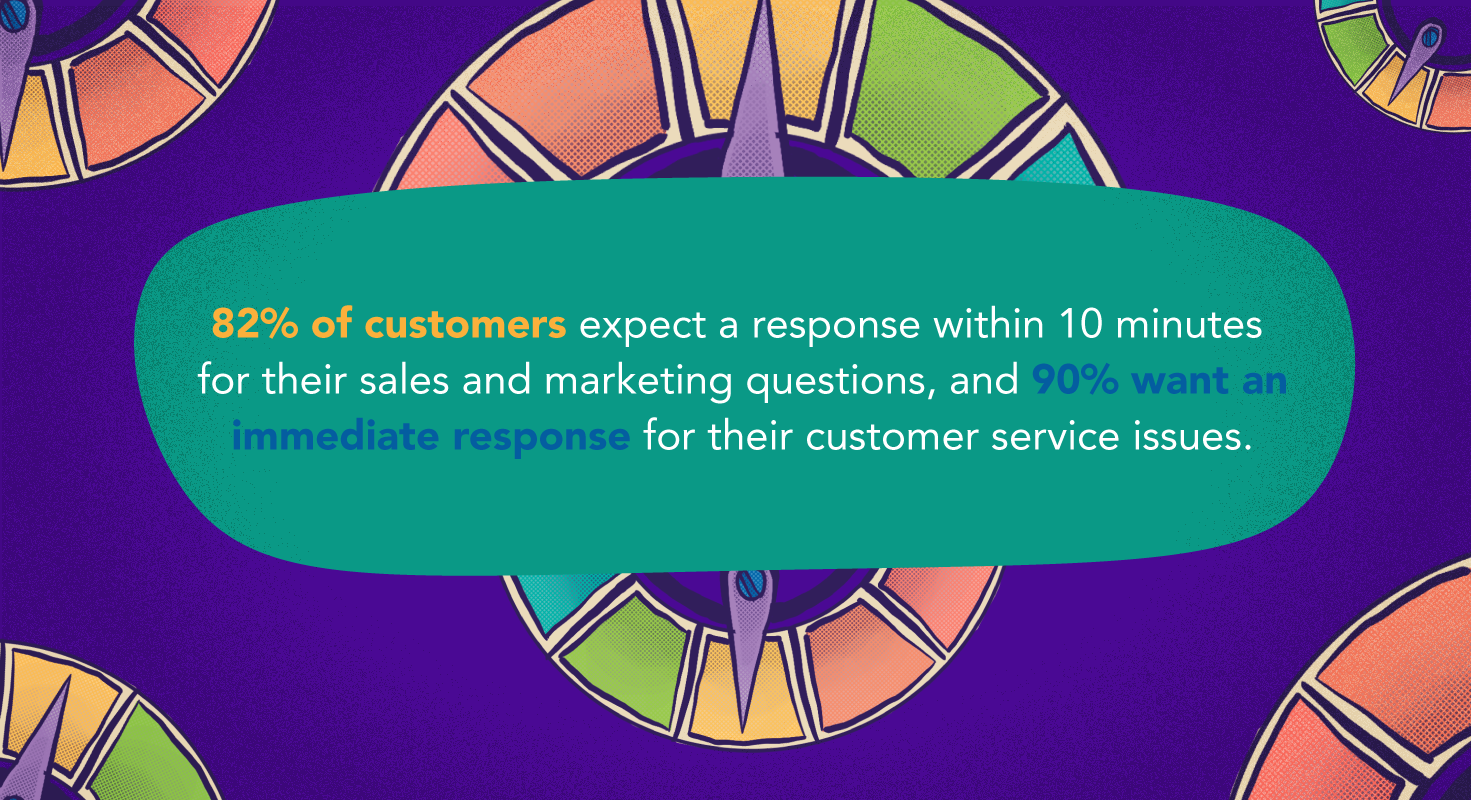
Follow Up Quickly with Customers
In the current context, customers have very little patience and want to see results asap. In fact, 82% of customers expect an immediate response (10 minutes max) for their sales and marketing questions, and 90% want an immediate response when they have a customer service issue. This is why first-call resolution rates and other call center metrics are of utmost importance.
Once they have responded, confirming reception of their feedback can lead to a quick improvement in perception. Acknowledging that you are listening and working on the issue shows that you are committed to the customer experience and willing to resolve their problems. All of this can have a significant impact on your NPS.
Create Case Studies
Figure out why your promoters love you. Try to determine what you did right with them on their customer service journey and turn it into a case study that your colleagues can use in the future. Were they thanked after an interaction? Did they receive a follow-up call after they complained about something?
The goal is to create a highly detailed case study to replicate that satisfaction level, enhance the customer experience, and increase your NPS across the board.
Ask the Right Questions
It’s ideal to gather additional information when you ask your customers to complete the survey, but asking the right questions is crucial too. For example, for an online clothing store, along with your main survey question, you might ask people what compelled them to buy from you (multiple choice answers). You can also ask them how easy it was to find the product they wanted and how simple different customer journey stages were.
Additionally, you can draw on data from your web analytics so that you know their time on page, page load speed, referral URL, and the number of pages viewed, for example. The more data you collect, the better you can understand and improve the NPS.
It’s clear that the Net Promoter Score is a critical KPI that not only measures customer loyalty and retention but also allows companies to determine what is and isn’t working for them.
Now that you know the exact method of NPS calculation, what it means, how to interpret the results, and how to improve it, you can go the extra mile to show your customers that you care and turn as many of them into promoters as possible.
Infographic


![Net Promoter Score: How to Calculate, Measure + Improve It [Formula] Net Promoter Score: How to Calculate, Measure + Improve It [Formula]](images/header-image-net-promoter-score.png)




![What is Omnichannel Customer Service? [Benefits & Tips] What is Omnichannel Customer Service? [Benefits & Tips]](images/omni-channel-explained-350x203.png)

